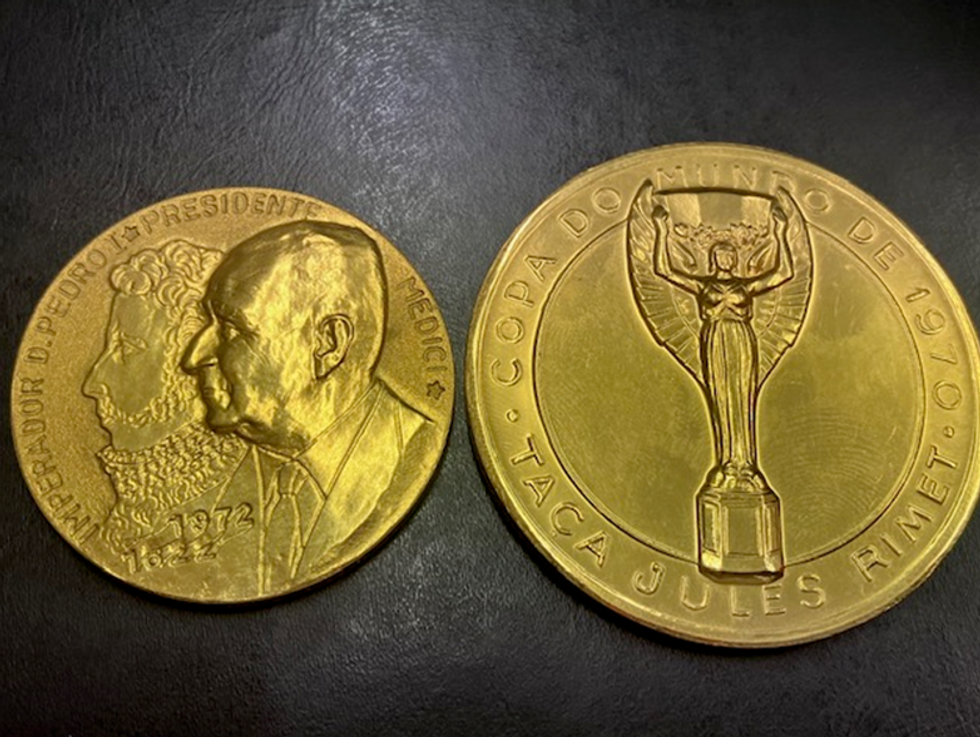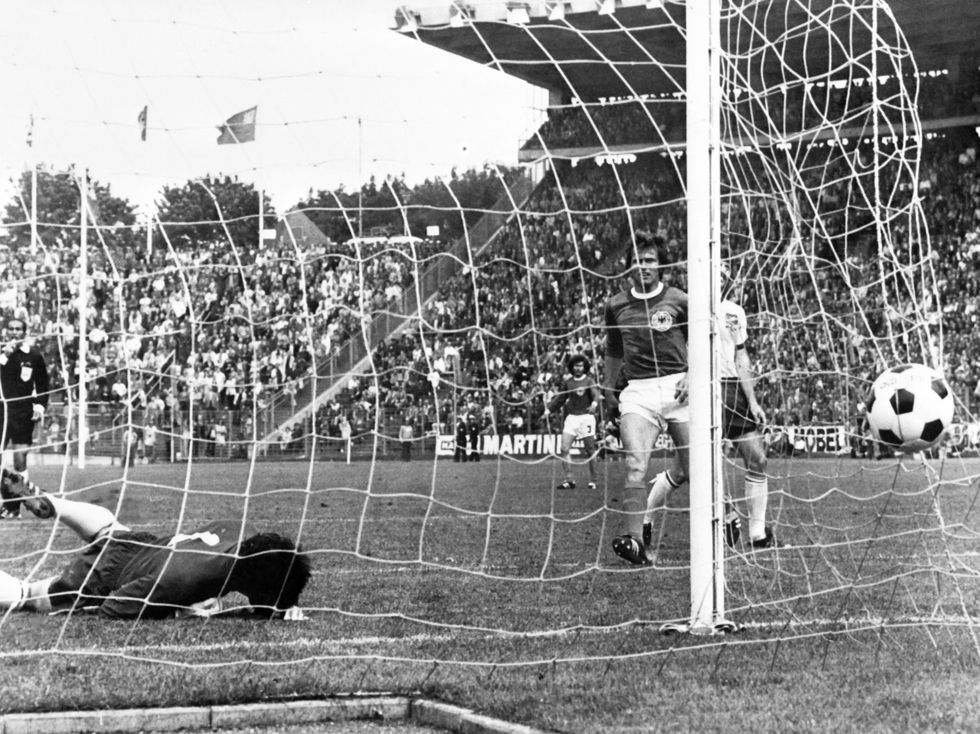Ken Aston’s family are auctioning the items
Don't Miss
Most Read
Latest
TWO rare medals presented to the English referee who invented yellow and red cards are going under the hammer.
Ken Aston’s family are auctioning the items which were given to the man credited with creating many of the rules we see in football today.
They are expected to fetch thousands when they go on sale at an auction in Rayleigh, Essex next month.
One of the medals - which is 21 carat gold - was handed to Aston after the 1970 World Cup.

Aston, who died aged 86 in 2001, was in charge of the referees for the 1970 tournament which was the first time Aston’s idea of yellow and red cards were trialled.
The second item is a rare gold coin handed to Aston after the 1972 Independence Cup.
Explaining the story behind the medals, antiques expert Dave Davies told GB News: “When Brazil won the World Cup for the third time in 1970, there was a celebratory event put on by FIFA/The Brazilian Football association.
"The Brazilian football team attended including Pele, and each of the team was presented with one of these medals along with the manager and his assistant. This one was presented to Ken Aston as he was in charge of the referees for the whole competition.
“A number of new rules and regulations including the red and yellow cards which were implemented at the 1970 World Cup competition which were Aston’s conception. So this is a rare medal.
“Then, in 1972, Brazil held the Independence Cup in what was the biggest gathering of football nations ever. A coin was produced in different metals from bronze to gold and the team and VIP’s were presented the gold version. So this coin, again, is a very rare item.”

Ken Aston was in charge of refs at the 1974 World Cup
GETTY
Aston, born in Colchester, Essex, qualified as a referee in 1936, working his way through the leagues. He also worked as a teacher.
In 1947 he introduced brightly coloured linesman's flags, one yellow and one red, in place of those provided by the home team, in the home team's colours, which had traditionally been used.
He was in charge of all referees for the 1966, 1970 and 1974 World Cups.
His idea for red and yellow cards came about following an incident in the England vs Argentina match in the 1966 World Cup.
It came to Aston's knowledge that Jack Charlton had been booked by the German referee, Rudolf Kreitlein. Charlton called the press office, where Aston was based as head of World Cup referees, in order to confirm the information that he had read within the newspaper that Kreitlein had booked him. Aston, driving from Wembley Stadium to Lancaster Gate that same evening, had Charlton's confusion in mind during the journey.
On the trip, as he stopped at a traffic light junction, and Aston realised that a colour-coding scheme based on the same amber or yellow and red could be used in football.
After retiring Aston became senior lecturer of the Football Association Referees' Panel and Chief Instructor for the American Youth Soccer Organization (AYSO), a position he held for 21 years. In 1997, he was awarded the MBE.
The Ken Aston Camp is held annually in Orange, CA. The camp honours Ken's commitment to service and excellence. The Ken Aston Cup, was an annual competition to recognise skilled referees in AYSO.
The items will be auctioned at the Essex auction house Stacy’s Football auction 24th April 2024 live online bidding via www.the-saleroom.com, for further info - footballwanted@virginmedia.com













